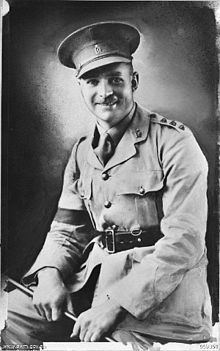Allegiance Australia Name Lionel Matthews | Battles/wars Second World War Years of service 1939–1944 | |
 | ||
Born 15 August 1912Stepney, South Australia ( 1912-08-15 ) People also search for Tom Derrick, Jack Mackey, Ralph Shields, Albert Cleary | ||
Derrick martinez vs lionel matthews
Lionel Colin Matthews, GC, MC (15 August 1912 – 2 March 1944) was an Australian Army Signals Corps officer posthumously awarded the George Cross in recognition of his gallant and distinguished services whilst a prisoner of war in Japanese hands in Borneo during the Second World War.
Contents
- Derrick martinez vs lionel matthews
- Early life education and marriage
- Army service
- Prisoner of war
- George Cross
- References
Early life, education and marriage
Matthews was born in the Adelaide inner north-eastern suburb of Stepney. He was educated at East Adelaide Public School and Norwood High School. After graduation, he started work as a salesman in a department store.
On 26 December 1935 at St Matthew's Anglican Church, Kensington, he married (Lorna) Myrtle Lane. They had one child, Lionel David Matthews.
Army service
He enlisted with the Australian Military Forces in Caulfield, Victoria on 10 June 1940, and was promoted to lieutenant on 1 July 1940. He joined the 8th Division on 12 July 1940, spending the next 7 months in Sydney. He and his unit embarked for Singapore on 2 February 1941, arriving on 18 February 1941. Following the outbreak of hostilities with the Japan, he was awarded the Military Cross for outstanding conduct during operations in Malaya. The citation read:
During operations at GEMAS this officer succeeded in maintaining cable communications between his Brigade HQ and units under heavy artillery and mortar fire and serial bombardment, displaying a high standard of courage, energy and ability in doing so. Later during the operation on Singapore Island Capt Matthews succeeded in laying a cable over ground strongly patrolled by the enemy and thus restoring communication between his Divisional HQ and the HQ of a Brigade at a critical period.
Matthews was subsequently promoted to captain on 21 January 1942.
Prisoner of war
He was interned by the Japanese in the notorious Changi prison after the fall of Singapore on 15 February 1942. He was transferred to Sandakan, North Borneo, with nearly 1500 other Australians. He set up contacts with allied agents and sympathisers to establish an intelligence network. He collected information to relay to these contacts and helped organise prisoner escapes with Filipino guerrillas.
The Japanese learnt of his role and arrested Matthews and others. They were interrogated, tortured and starved before being sentenced to death. Despite his ordeal, Matthews refused to betray his colleagues or any details of their resistance planning. Matthews was shot by firing squad, along with two members of the North Borneo Armed Constabulary and six other Asians on 2 March 1944 at Kuching, Sarawak.
In 1946 his body was exhumed and reinterred in the Labuan War Cemetery in grave J.B.15.
George Cross
Following the war, Matthews was posthumously awarded the George Cross for his actions while a prisoner. The award was gazetted in 1947.
The citation read:
Captain Matthews was as a prisoner of war held by the Japanese in Sandakan, Borneo between August 1942 and March 1944.
During this period although in captivity he directed personally an underground intelligence organization. By sheer determination and organization he arranged through native contacts for the delivery of sorely needed medical supplies, food and money into the camp – factors which not only kept up the morale of courage of the prisoners but which undoubtedly saved the lives of many.
He was instrumental in arranging a radio link with the outside world and was able to send weekly news bulletins to the civil internees on Berhala Island. He was also responsible for arranging for the delivery of fire arms to a secret rendezvous for future use.
Captain Matthews gained the confidence of H.E. the Governor of British North Borneo – himself an internee in that area – and was appointed to Command (although still a PW) the North British Armed Constabulary. At great danger he organized that body in readiness for a rising against the Japanese and also organized a movement amongst the loyal native population in Sandakan for a similar purpose. He gained contact with the Guerrilla Forces in the Philippines and successfully organized escape parties. His ultimate object was to link up with outside forces and to stage eventually a resistance movement and insurrection at the first opportunity.
These activities of Captain Matthews were carried out at the greatest peril to himself at all times. His contact with the natives was on a doubtful basis and he was in constant danger of betrayal and death. He accepted these risks fearlessly and showed the greatest courage and enterprise, although beaten and tortured by the Japanese.
He was in a position where he could have escaped on numerous occasions by means of the help of an organization set up by the Chinese but he declined, electing to remain where his efforts could aleviate the sufferings of his fellow prisoners.
He displayed the greatest gallantry in circumstances of the gravest danger. His leadership conduct, unflagging optimism and impertability were an inspiration to all closely associated with him in the resistance organization and to his fellow prisoners.
After his arrest by the Kempei Tai Capt. Matthews showed courage of the highest order. He steadfastly refused to make admissions under brutal torture, beatings and starvation to implicate or endanger the lives of his associates. His conduct at all times was that of a very brave and courageous gentleman and he worthily upheld the highest traditions of an Australian Officer.
There is a plaque on the Jubilee 150 Walkway in Adelaide in memory of him and his achievements.
